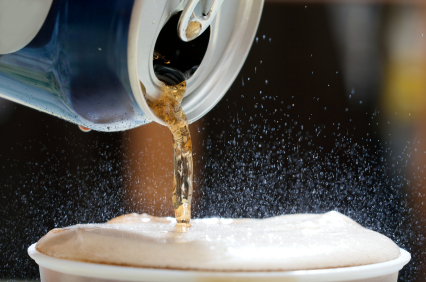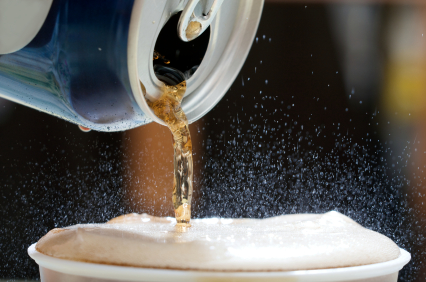 New York City Mayor Michael Bloomberg just went there. The city is asking the USDA for permission to stop food-stamp recipients from using the benefit to buy soda or sugar-sweetened drinks.
New York City Mayor Michael Bloomberg just went there. The city is asking the USDA for permission to stop food-stamp recipients from using the benefit to buy soda or sugar-sweetened drinks.
This news comes on the heels of phase two of NYC’s anti-soda public-information campaign, another gross-out video and advertising blitz. While there are many things you currently can’t purchase with food stamps, aka the Supplemental Nutritional Assistance Program (SNAP), such as beer, wine, and even — some might say misguidedly — prepared foods, restricting something that many do indeed consider a “staple food” is controversial, even among anti-hunger advocates. Many view attempts to restrict purchases of particular foods as stigmatizing poverty, while others think that depriving low-income residents of small pleasures other people get to enjoy is simply too harsh.
I participated a few months back in a The New York Times Room for Debate on this very subject, in which several participants raised such objections, and I was in the minority. As I argued at the time:
Could this controversy result from a belief on the part of pundits and policy makers that being poor in America means acquiescing quietly to a substandard diet? Healthy foods, in this line of reasoning, are a luxury that should be reserved for those who can afford them. As unjust as this sounds when presented so baldly, it is exactly this belief that underlies attempts to deny government the right to make good nutrition a cornerstone of the food stamp program.
I’d add a few more things to that now. First, the federal government remains unable and unwilling to staunch the unremitting flow of marketing dollars aimed at boosting consumers’ purchases of “liquid candy.” Meanwhile, state governments are at the mercy of overwhelming industry lobbying against attempts to levy taxes on sweetened beverages. In this hostile environment, appealing to the USDA to let it restrict food stamp use is one of the last arrows in cities’ public health quiver.
And I also think we can learn something from work that’s been done on so-called “competitive foods” in the school lunch program, a subject about which I recently wrote. “Competitive foods” is the federal euphemism for junk food that’s sold in school, including soda, candy, and snacks from vending machines in the lunchroom. A study that looked into students’ consumption patterns found that low-income students bought from vending machines at about the same rate as everyone else. What this means, I think, is that, for better or for worse, low-income residents will probably still find ways to purchase soda, even if they can’t use food stamps to do it.
Desperate times call for desperate measures. With soda consumption up, milk consumption down, corporate interests ascendant and obesity rampant, it’s high time public health officials let this particular arrow fly. I wonder if the USDA will duck for cover.



